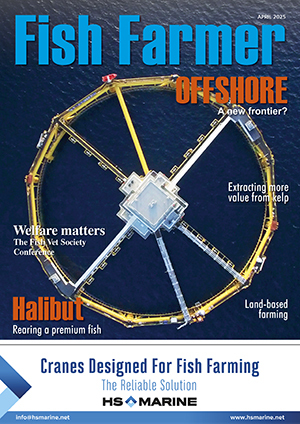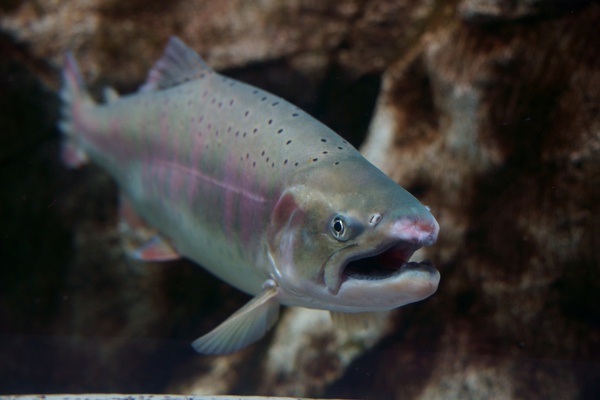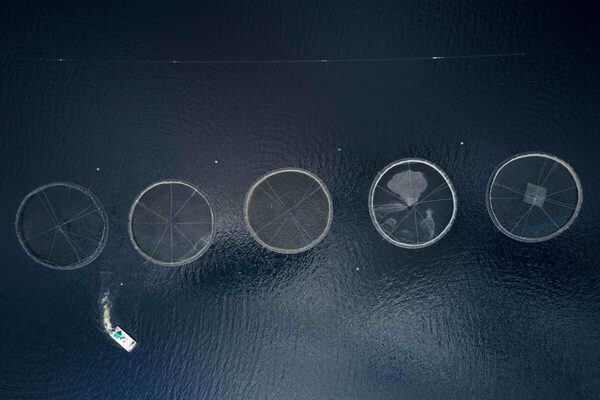What happened to the wild salmon and sea trout around Loch Ewe? Martin Jaffa explains
The seabed around Loch Ewe recovered quickly once the salmon farm there closed but, asks Dr Martin Jaffa, what has happened to the wild sea trout and salmon?
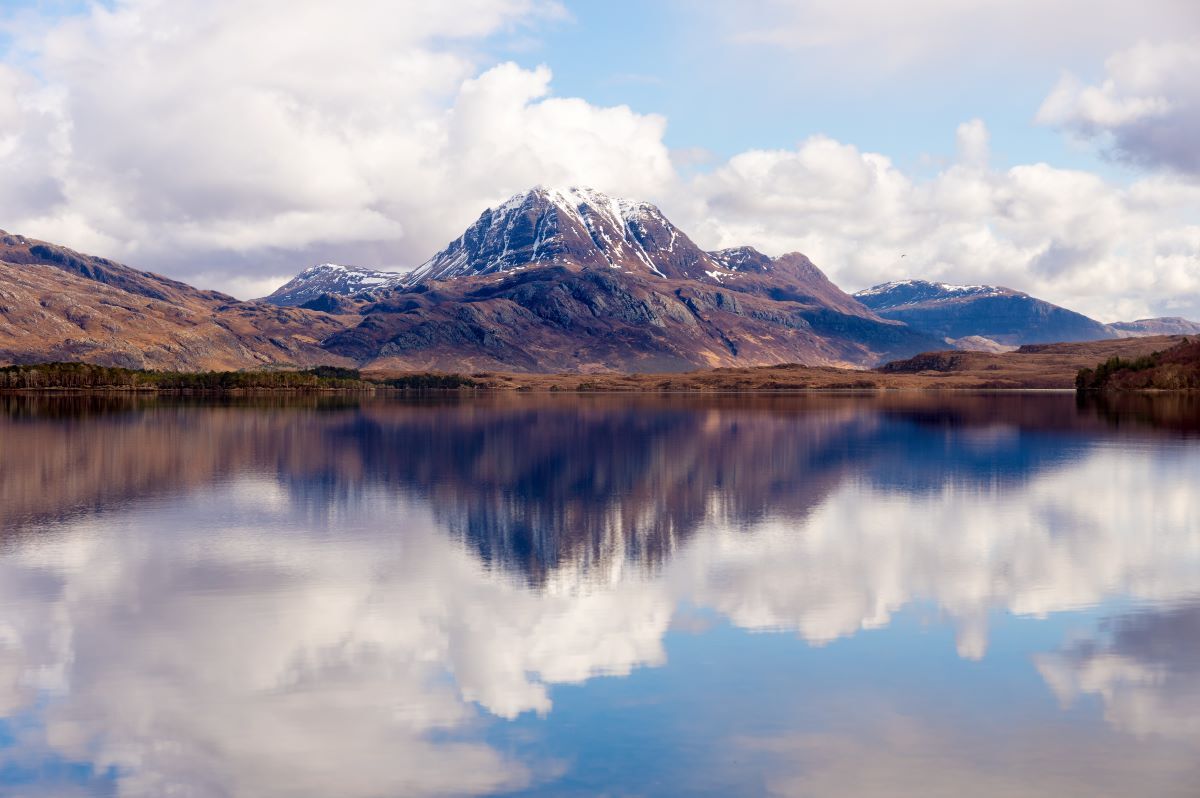
Salmon Scotland recently announced the results of a three-year post-closure environmental study conducted around Mowi’s former Isle of Ewe salmon farm. When operational, this was the most “contentious” salmon farm in Scotland. The wild fish fraternity have long blamed salmon farming in Loch Ewe for the collapse of the world-renowned sea trout fishery in Loch Maree, a freshwater loch which is part of the Loch Ewe System.
The fact the seabed can quickly recover was never an issue, except for those critics who seem to claim that salmon farming is the greatest environmental disaster to beset the planet since hydrogen bombs were dropped on Japan at the end of WW2. In fact, this is not even the first such seabed survey conducted by a farming company showing speedy recovery of the seabed after a site closure, but it is probably the most comprehensive.
Whilst this is undoubtedly a good news story, an important part of the story is missing. For as long as I can remember, the wild fish lobby has argued that if salmon farms are removed, stocks of wild salmon and sea trout will recover. In fact, the wild fish sector continues to argue this very point today some 40 years after they began to claim that salmon farming was having a negative impact on wild fish stocks.
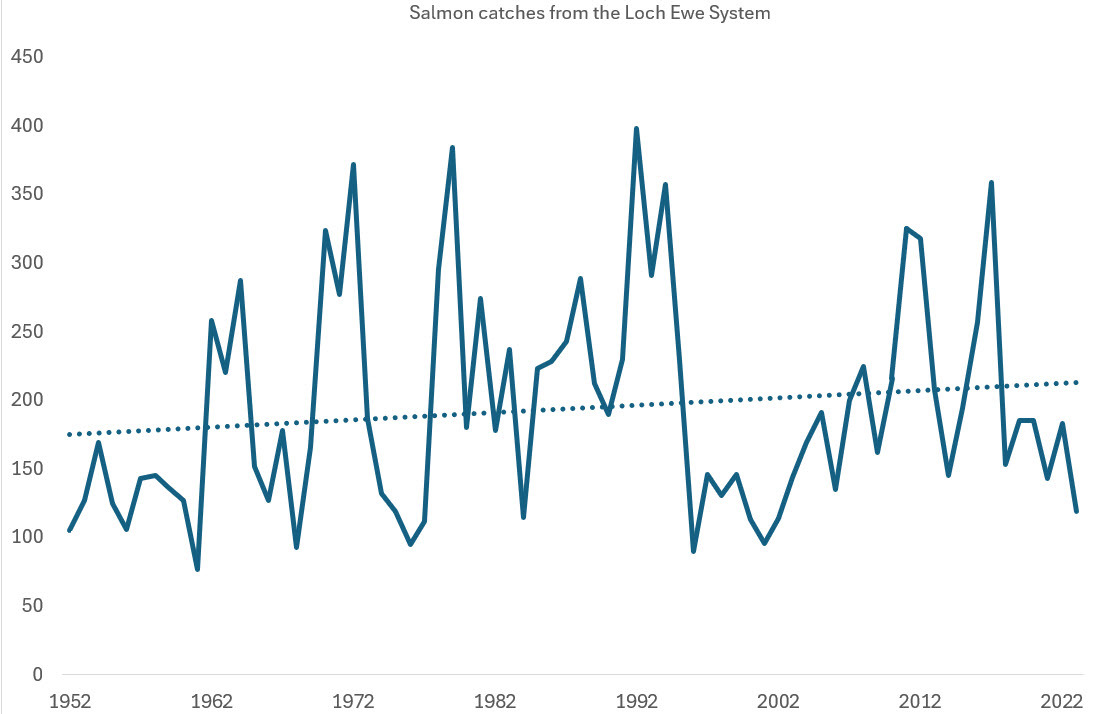
The Loch Maree controversy
The Loch Ewe System has always been a rallying call for the wild fish sector as they blamed the collapse of the Loch Maree sea trout fishery on the arrival of salmon farming to Loch Ewe in 1987. Initially, the farm was located closer to the river Ewe, but in 2005 it was moved to the site currently investigated.
I have written extensively on the sea trout collapse which was caused by a combination of a long-term decline of sea trout across all of Scotland and the opening up of Loch Ewe to trawlers in 1984 when the three-mile limit was removed.
In 2005, a paper was published by two scientists from the angling sector that blamed the arrival of salmon farming on the collapse even though the site was first stocked in the same year that they claim the collapse occurred which is not only extremely unlikely but has never been repeated anywhere.
The paper highlighted that the nearest neighbouring farms were 40km to the north and 55 miles to the south which is still true today. Thus, without the influence of any nearby farms and the removal of the Loch Ewe cages, all the conditions are in place to witness a resurgence in numbers of wild salmon and sea trout in and around Loch Ewe, the river Ewe and Loch Maree.
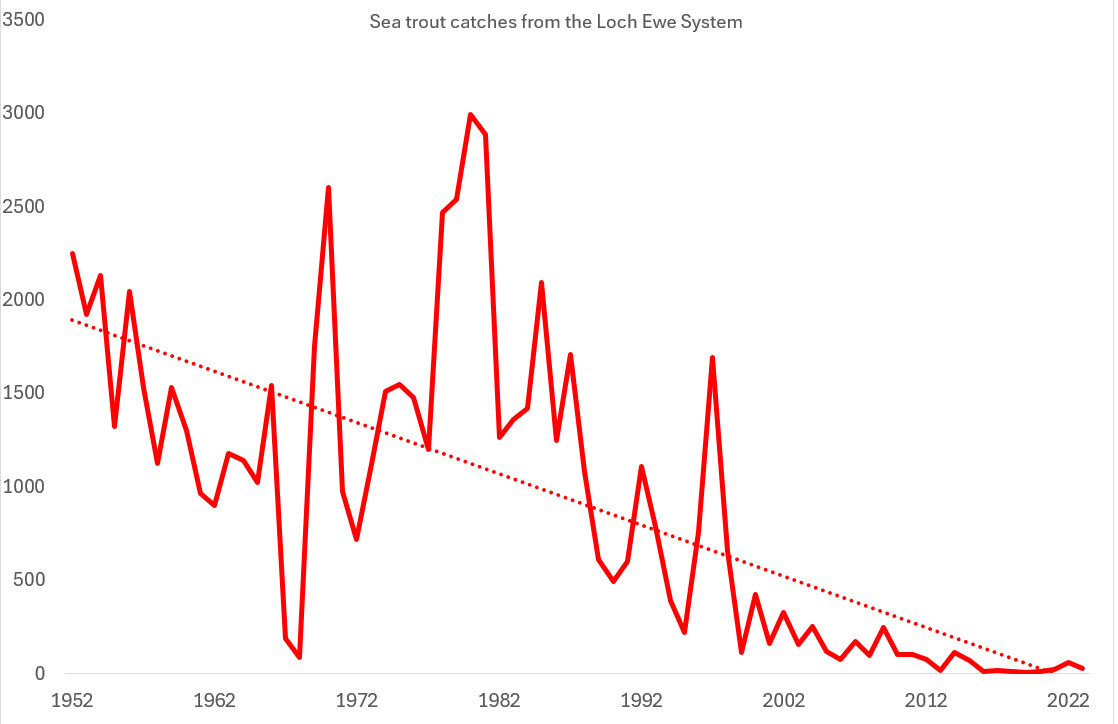
However, it is misleading of me to suggest a resurgence of salmon because since the earliest days of salmon farming, catches of wild salmon from the river Ewe had increased, an inconvenient truth for the wild fish lobby and one that they have consistently ignored because it doesn’t fit in with their narrative.
Although there is a definite upward trend for salmon catches, there is also some significant annual variation, most notably in the early 1970s before the salmon farm arrived and again in the early 1990s. This second drop was due to a fall in the intensity of angling, after repeated warnings from the angling fraternity that salmon stocks were near extinction and that anglers should avoid fishing the west coast. A similar fall was seen at the same time in many other river catchments so clearly not due the presence of salmon farms.
What is most interesting about the graph is that catches have declined since the Isle of Ewe farm closed.
These more recent declines are in line with the national trend so even though conditions have improved according to the wild fish lobby, the national trend has overridden local conditions.
Sea trout are a different story. Data shows sea trout have been in long-term decline along the west coast since records began and bar some short-term annual variations this is also true for the Loch Ewe System. Over the last 20 years, sea trout catches have been almost non-existent, and this trend has not changed since the farm closed. What is unclear is whether sea trout have disappeared from Loch Ewe or whether anglers are not bothering to fish the system because they have been told there are no fish to catch, even though the Loch Maree Hotel website indicates there is good fishing to be had.
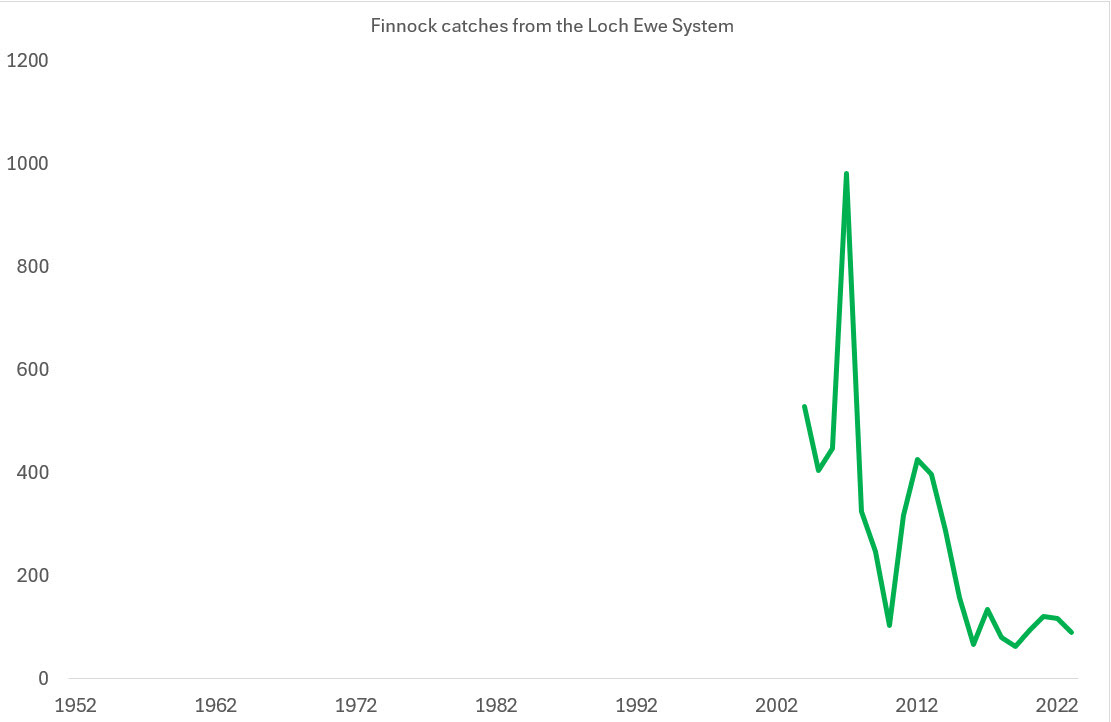
Since 2004, the Marine Directorate has been recording “finnock” catches. These are young sea trout that have returned to freshwater for the first time and back in the old days, anglers just threw them back without recording any numbers because they weren’t valued. The lack of any fish has meant that finnock are now considered just as important as larger salmon and sea trout. Catches increased initially, but since 2007, numbers have declined rapidly especially after the farm closed.
The farm closure has not improved the lot for wild fish which is not surprising. Despite claims otherwise from the wild fish lobby (and also SEPA) salmon farms have no or very little impact on wild fish stocks. Until the wild fish lobby changes its focus away from salmon farming and towards the real threats, safeguarding wild fish stocks for the future will remain just a pipe dream.
